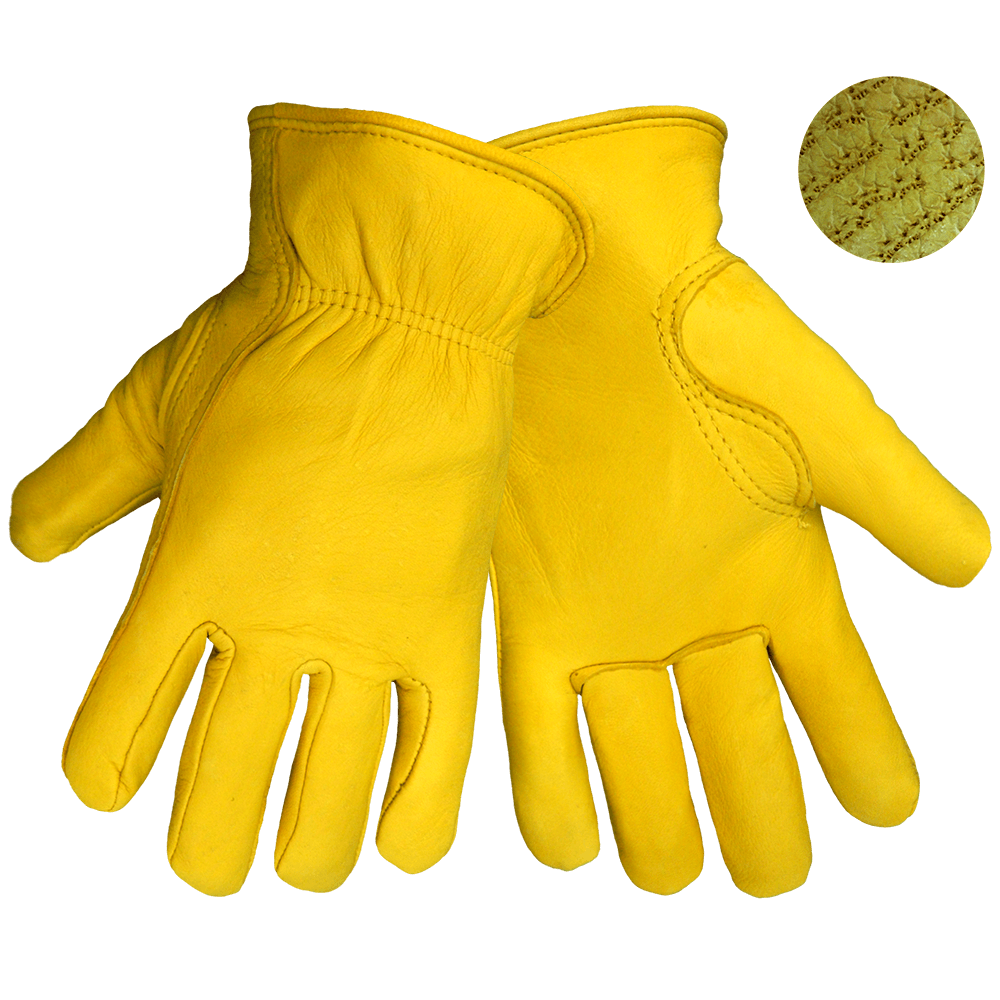Have you ever wondered what it takes to make a leather work glove? Well, today is your lucky day! Keep reading to get an overview of all that it takes to make a leather work glove.
The production of leather is broken down into three different stages, preparatory, tanning, and crusting.
The preparatory stage includes many pieces that help to preserve the leather and get it in pristine condition to be tanned. It must be soaked in order to rehydrate and remove any unneeded proteins and fats. It is then further treated to remove any leftover hair or wool. Diluted acids are then used to lower the pH level of the hide and to help clean it so it nice and silky. Finally, they are treated with another chemical that prepares it to take on the tanning agent.
When leather comes off an animal, on average, it is about 4 millimeters thick. This is too thick and unmanageable for most glove and clothing manufacturers. So, the hide is split into three different layers. Split leather is the bottom layer, middle split is the middle layer, and grain leather is the top layer. Typically, split leather and grain leather are the only two layers used in manufacturing. Split leather tends to be fuzzier and found from larger animals like cows. Grain leather is smooth and water repellant and is found in animals both large and small.
Before tanning, leather is limed, which allows the fibers to loosen in preparation for the chemicals that will need to be absorbed in the tanning process. When the skin is limed, it appears swollen, and a bit thicker, which allows it to be divided into split and grain leather.
Tanning is a chemical process that makes the leather hide feel more soft and supple. The tanning process also helps to remove any risk of bacterial growth. And finally, crusting is the step before leather is sold to manufacturers. During the crusting phase, the leather hides are essentially laid out to dry and be baked. The chromium chemical used in the tanning process leaves the leather with a blue tinge, and so it must then be dyed to obtain a more natural coloring.
Leather is finished in a variety of ways that, depending on what it is to be used for, makes the leather smooth, shiny, and polished.




